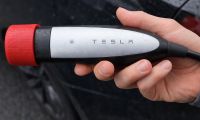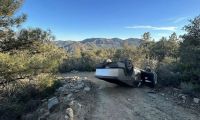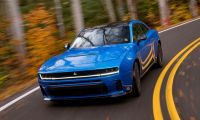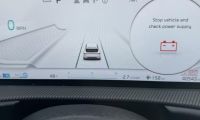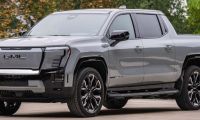Most people know Elon Musk in relation to the companies he founded and runs and his status as the richest person in the world. As a result, most people see Elon as a great business leader and investor.
However, more than his business acumen, Musk, at his heart, is first and foremost an engineer.
On top of his CEO role at two of his biggest companies, Musk is also the Chief Product Engineer at Tesla and the Chief Technology Officer at SpaceX. In his more engineering-focused roles, Musk goes into the weeds making major engineering and design decisions.
For example, Musk is credited as the brains behind the Cybertruck’s stainless steel exoskeleton body. At SpaceX, Musk is also behind some pivotal engineering decisions such as transitioning the company’s rocket’s to use methane and changing the body of SpaceX’s upcoming rocket from carbon fiber to stainless steel.
Musk’s love of science and engineering is in fact so profound, that eventually, he plans to retire from his CEO role at Tesla and transition full-time to an engineering and product designer role.
Related News: Elon Musk Confirms Tesla Cybertruck Owners Will Be Able To Legally Drive Without A Side-View Mirror
The Tesla CEO’s plans are also in line with his past aspiration to become a researcher in the advanced materials field. Initially, Musk moved to Silicon Valley not to start an internet company that made him his first million, but rather to attend a doctoral program at Stanford University.
At Stanford, Musk was planning to research ultracapacitors in the hopes of increasing their energy density and making them viable to power electric vehicles.
However, only a few days after enrolling, Musk dropped out to create his first company called Zip2. Musk then used the money he made from the sale of Zip2 to create PayPal and the money he made from PayPal to create Tesla and SpaceX.
And as a result of his engagements in his various companies, Musk never went back to Stanford to finish his doctoral program. This means we will never know what kind of breakthroughs Musk would have contributed to the world as a researcher.
However, lucky for us, today Musk’s Stanford Professor Bill Nix gave us a glimpse into the kind of work Musk would be engaged in if he had continued on a purely academic path.
In a recent podcast recounting the early days of Tesla with Tesla Owners Silicon Valley, Musk mentioned Professor Nix by name. And today, Musk shared on Twitter a letter he got from Professor Nix as a response.
Professor Nix opened his letter by referencing the podcast and the fact that Musk had mentioned his name. Professor Nix then goes on to reference the segment of the podcast where Musk discusses using silicon anode to increase the energy density of lithium-ion batteries.
Related News: After 8 Months Elon Musk Agrees To Enable FSD Beta On NHTSA’s In-House Tesla Test Vehicle
During the podcast Musk started by saying “the difficulty of getting to, as you get to high energy density lithium-ion, you need to change the anode to silicon. You get a dramatic increase in energy density as you switch the anode to silicon.”
Then Musk goes on to detail the challenges of going to a silicon anode “the problem with silicon is that it expands and contracts a lot during charge and discharge so, in the expansion and contraction it wants to kind of crumble, like mud cracks – essentially that is one way to think about it.”
Continuing, Musk says…
“so the problem with a pure silicon anode is that it is very difficult to have it stay together when you charge and discharge so, one of the things you can do is to add silicon to the carbon anode.
Carbon has only very minor expansion and contraction so it is easy to maintain a carbon anode and have its structure be robust across many charge cycles. And you can throw a little bit of silicon there and the silicon can kind of expand and contract inside the carbon matrix.”
But, as you start adding more silicon it gets harder and harder to maintain the structure of the anode. So our highest energy density cells will use, I don’t know like, 90% carbon maybe 10% silicon or something like that – It’s a small percentage.”
Finally talking about how to produce a pure silicon anode Musk says “there are much higher energy density cells you can get where if you have very precise construction of the anode, a little bit like chemical vapor deposition, you sort of print it like a circuit board situation such that the expansion, it can expand and contract without cracking, then you can get 50% higher energy density than we have in our cars.”
Apparently, Professor Nix was happy with Musk's breakdown of using Silicon as the anode material in batteries that he wrote in the letter “your description of the issues of using Si [silicon] for anodes for lithium batteries was spot on.”
Continuing Professor Nix writes…
“About 10 years ago we at Stanford did research on the very issues you described. Indeed, it almost seemed like you had read all of our papers. As part of the work we did, we found that since the crumbling of silicon on lithiation is associated with the amorphization of crystalline silicon, less crumbling can be achieved by starting with amorphous silicon in the first place. Much larger silicon particles can be lithiated without cracking if they are initially in an amorphous state. Using amorphous silicon as particles in a carbon matrix might allow a much higher volume fraction of silicon to be loaded into carbon anodes. For all I know, someone may have patented this idea.”
Finally, professor Nix closes his letter by reminding Musk that this would have been the type of research the Tesla CEO would be involved in if he had continued on an academic path by writing “I thought you would like to hear about work you might have done.”
Nice letter from Bill Nix, who would’ve been my prof at Stanford if I hadn’t put grad studies on (permanent) deferment pic.twitter.com/ioq0mGwN7K
— Elon Musk (@elonmusk) August 19, 2022
It is exciting to imagine what kind of scientific breakthroughs Musk would be able to contribute to the world if he was unencumbered with managerial tasks of running the day-to-day business of his various companies.
Thanks to Professor Nix, we at least get a glimpse of what kind of issues Musk will be focused on once he retires his business leader role. Having said that, Musk, at least for the time being, is committed to running Tesla and SpaceX.
However, we will be sure to keep you posted if Musk’s plans change. Until then, make sure to visit our site torquenews.com/Tesla regularly for the latest updates.
So what do you think? Excited to learn the type of work Musk would be doing if he hadn’t dropped out of Stanford? Also, what do you think he should focus on when he inevitably retires from his CEO position? Let me know your thoughts in the comments below.
Image: Screenshot from Elon Musk’s interview with Tesla Owners Silicon Valley
For more information check out: Tesla Developing One Of Most Powerful AI Supercomputers Worldwide - For Good Reasons
Tinsae Aregay has been following Tesla and The evolution of the EV space on a daily basis for several years. He covers everything about Tesla from the cars to Elon Musk, the energy business, and autonomy. Follow Tinsae on Twitter at @TinsaeAregay for daily Tesla news.








